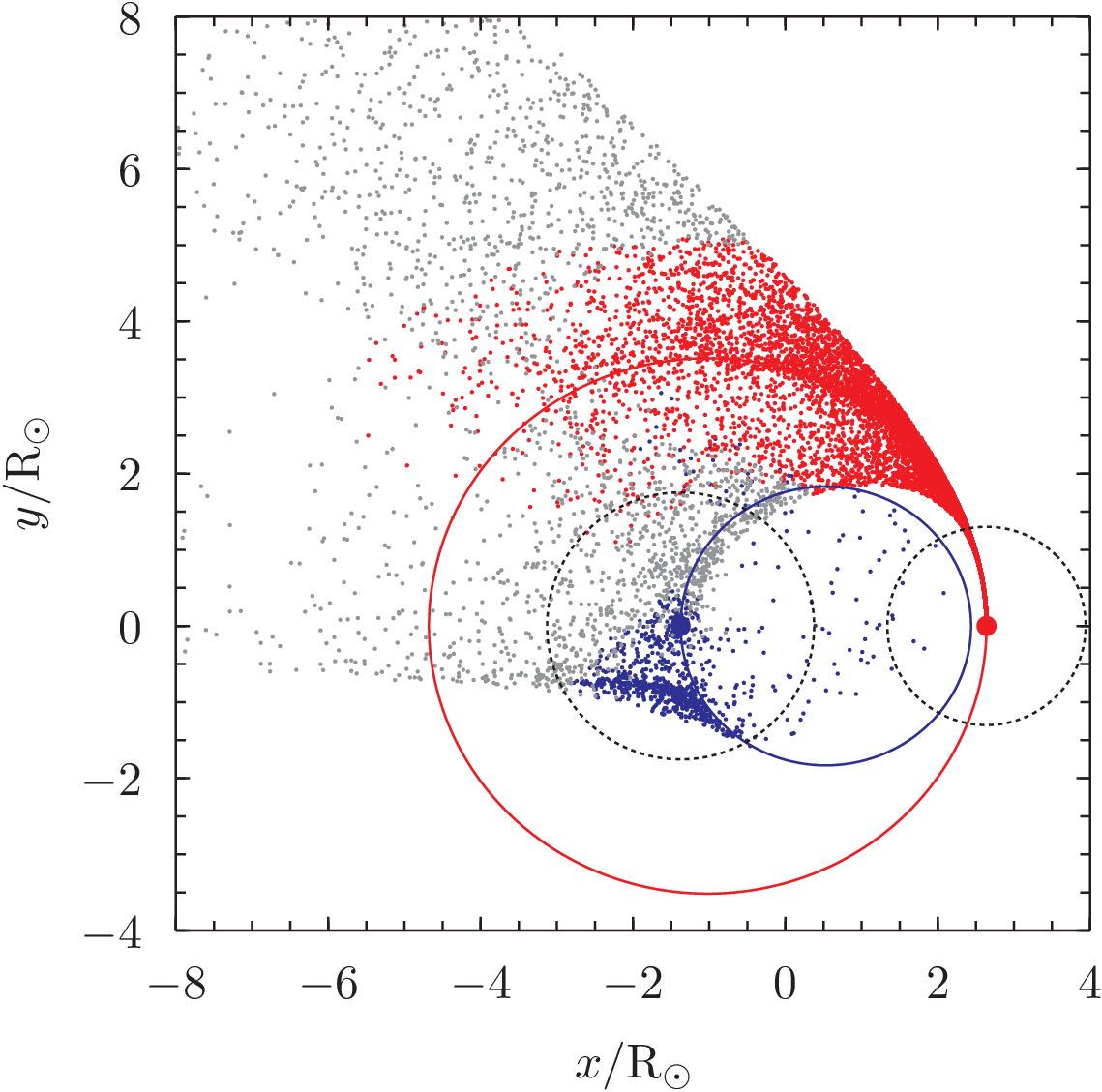Long gamma-ray bursts in compact binaries
Long-duration gamma-ray bursts are bright flashes of gamma-rays from distant extra-galactic sources. They are believed to arise when a massive, rapidly-rotating star undergoes core collapse to form a black hole. Because of the rotation a disc forms, the accretion of which powers the gamma-ray burst. However, sufficiently massive stars lose a large fraction of their mass in stellar winds over the course of their lives. It is hard to reconcile this with the requirement for rapid rotation, since stellar winds efficiently remove angular momentum.
One way to overcome the difficulty of retaining a rapid-rotating stellar core up to the point of supernova is for it to be in a close binary with a stellar-mass black hole, tidal forces from which synchronise it with the orbit. We model the fall-back of material onto the newly formed black hole following the supernova explosion in such a binary, and show that the presence of a nearby black hole companion has observable consequences for the gamma-ray burst. Firstly, accretion of material on to the black hole should stop after about 10 000 seconds as it will fall outside the Roche lobe of either of the stars in the binary. Secondly, a flare can be expected at a late time, from material either stored in the outer parts of the accretion disc or which accretes onto the companion star. The properties of the flare match late-time flares seen in a subset of long-duration gamma-ray bursts.
IMAGE 1:
Spatial distribution of material falling back into the plane of the binary. Red dots are material that will ultimately accrete on to the exploding star (the red point); blue dots will utlimately accrete on to the companion (blue point).
